
Are you tired of waking up in the middle of the night drenched in sweat? Do you find yourself constantly flipping your pillow to the “cool side” or kicking off your covers? If so, you’re not alone. Millions of people struggle with staying cool while sleeping, especially during warmer months or if you’re naturally a “hot sleeper.” The good news? The solution might be as simple as switching to a cooling comforter.
In this comprehensive guide, we’ll dive deep into the world of cooling comforters – what makes them work, who needs them most, and which options stand out as the best on the market today. By the end, you’ll have all the information you need to make an informed decision and finally enjoy the cool, refreshing sleep you deserve.
What Makes a Comforter “Cooling”?
Before we jump into specific product recommendations, it’s important to understand what exactly makes a cooling comforter different from standard bedding options. The science behind these specialized sleep products is actually quite fascinating.
The Science of Sleep Temperature

Our bodies naturally decrease in temperature as we fall asleep, and maintaining a slightly cooler body temperature (around 65°F to 68°F) is ideal for quality sleep. When we overheat during sleep, it disrupts our sleep cycles and can lead to restlessness, frequent waking, and overall poor sleep quality.
Cooling comforters are specifically designed to address this issue through several key mechanisms:
Breathable Materials
The primary feature of any good cooling comforter is breathability. Unlike traditional down or synthetic comforters that trap heat, cooling comforters utilize materials and construction techniques that allow air to flow freely.
Natural fibers like bamboo, eucalyptus, and certain types of cotton have inherent temperature-regulating properties. These materials allow for better ventilation and moisture-wicking, preventing the buildup of heat and humidity that causes night sweats.
Moisture-Wicking Technology
Many cooling comforters incorporate moisture-wicking technology similar to what you’d find in high-performance athletic wear. This technology actively pulls moisture away from your body, allowing it to evaporate quickly and keeping you dry throughout the night.
Phase-Change Materials
Some of the most advanced cooling comforters on the market today utilize phase-change materials (PCMs). These innovative substances absorb, store, and release heat when needed to maintain a consistent, comfortable temperature. They work by absorbing excess body heat when you’re too warm and releasing it back when your body temperature drops.
Who Needs a Cooling Comforter?
While anyone can benefit from better temperature regulation during sleep, certain individuals may find cooling comforters particularly life-changing:
- Hot sleepers who naturally run warm during sleep, regardless of the ambient room temperature
- Menopausal women experiencing hot flashes and night sweats
- Couples with different temperature preferences, where one partner tends to feel warmer than the other
- Those living in warm climates without access to air conditioning or with a desire to reduce energy costs
- People with certain health conditions that affect temperature regulation
- Anyone who values deep, uninterrupted sleep and has found themselves waking due to overheating
Key Features to Look for in a Cooling Comforter
When shopping for a cooling comforter, keep these essential factors in mind:
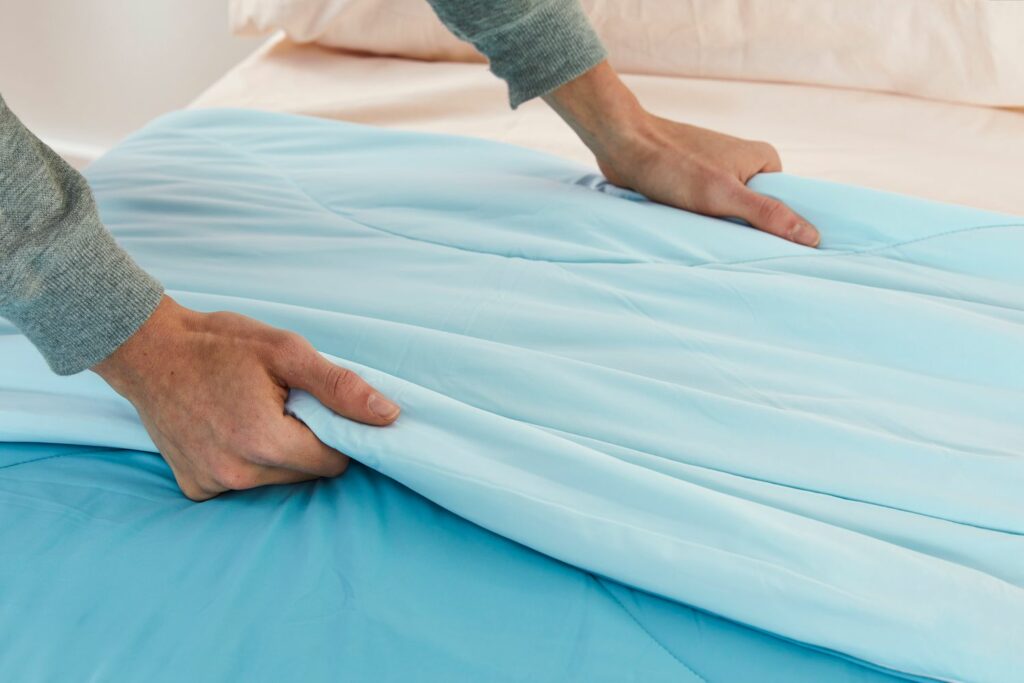
1. Material Composition
The material of your cooling comforter will have the most significant impact on its performance. Here are some of the best options:
- Bamboo – Naturally antimicrobial, hypoallergenic, and excellent at temperature regulation
- Eucalyptus/Tencel/Lyocell – Derived from sustainable wood sources, these fabrics are incredibly soft and cooling
- Cotton – Specifically long-staple cotton varieties like Egyptian or Pima offer good breathability
- Silk – A natural temperature regulator that adjusts to your body’s needs
- Wool (surprisingly!) – Despite its reputation for warmth, certain lightweight wool varieties actually wick moisture and regulate temperature effectively
2. Fill Type and Weight
The fill inside your comforter matters just as much as the outer fabric:
- Down alternatives specifically designed for cooling properties
- Lightweight natural down with high fill power (which provides warmth without weight)
- Specialized cooling gel fibers that dissipate heat
- Microfiber fills with moisture-wicking properties
3. Construction Method
How a comforter is put together affects its ability to keep you cool:
- Baffle box construction creates pockets that allow for air circulation
- Channel construction provides less fill stability but maximum breathability
- Quilted patterns that optimize air flow while keeping fill evenly distributed
4. Additional Cooling Features
Some comforters incorporate extra technologies to enhance their cooling capabilities:
- Cooling gel layers integrated into the fill or fabric
- Grid patterns that increase surface area for heat dissipation
- Specialized cooling treatments applied to the fabric
Top Cooling Comforters from Rest
After extensive research and testing, we’ve found that Rest offers some of the best cooling comforters available today. Here’s a detailed look at their impressive cooling comforter lineup:
Best Overall: Rest Cool Comfort™ Bamboo Comforter
The Rest Cool Comfort™ Bamboo Comforter has earned its reputation as the top performer in the cooling comforter space. Made from 100% sustainable bamboo fibers, this comforter is exceptionally breathable and feels cool to the touch. The bamboo viscose actively wicks moisture away from the body while you sleep, and Rest’s eco-friendly manufacturing process makes it an environmentally conscious choice as well.
Users consistently report that the Rest Cool Comfort™ maintains its cooling properties even after months of use. Its medium weight makes it suitable for year-round use in most climates, providing just enough warmth without overheating. The hypoallergenic properties also make it perfect for those with sensitive skin or allergies.
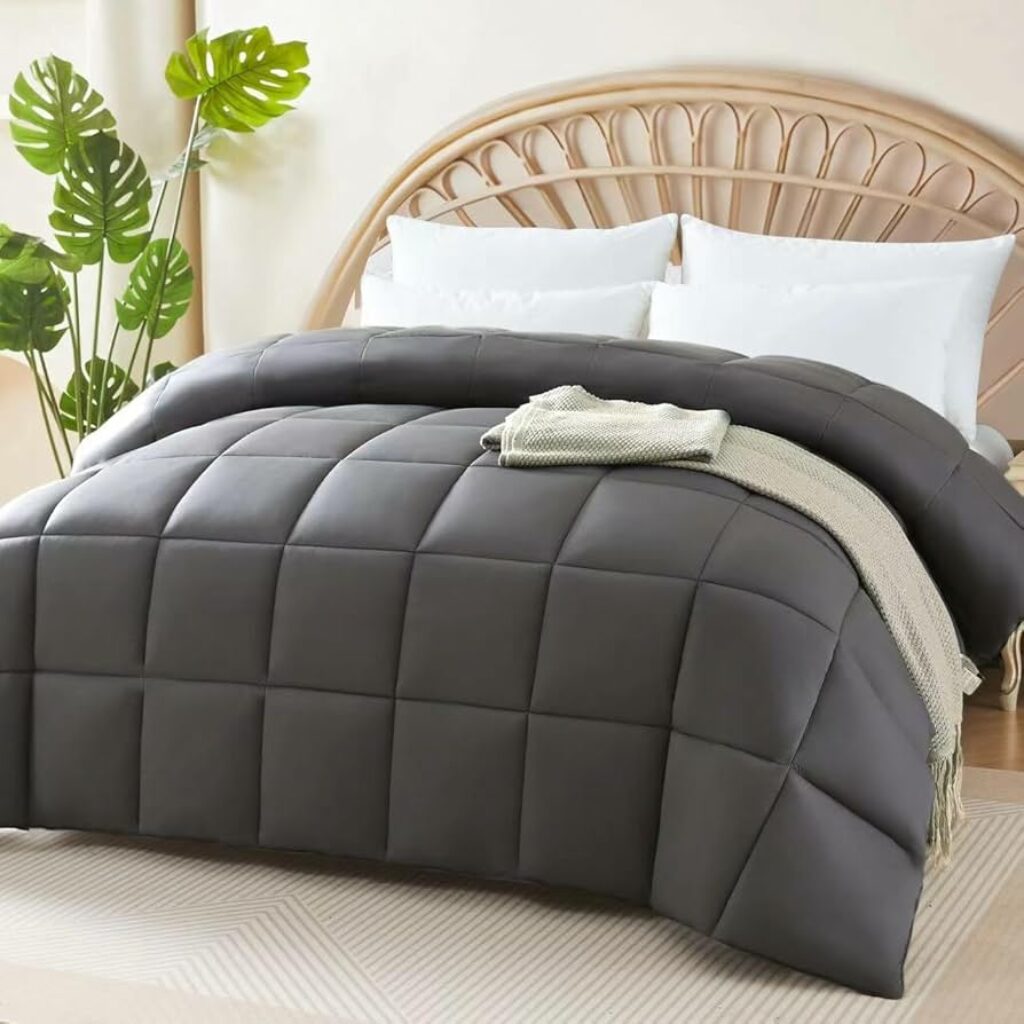
Best Luxury Option: Rest Arctic Silk™ Premium Cooling Comforter
For those willing to invest in premium sleep technology, the Rest Arctic Silk™ Premium Cooling Comforter is worth every penny. This high-end option incorporates Rest’s proprietary CoolPhase™ technology, which utilizes advanced phase-change materials to regulate body temperature throughout the night.
The luxurious silk and eucalyptus blend outer shell enhances breathability while providing an incredibly soft touch against your skin. The precision baffle-box construction ensures the cooling fill stays evenly distributed, eliminating hot spots. Each Arctic Silk™ comforter undergoes rigorous testing to ensure optimal cooling performance in various sleep conditions.
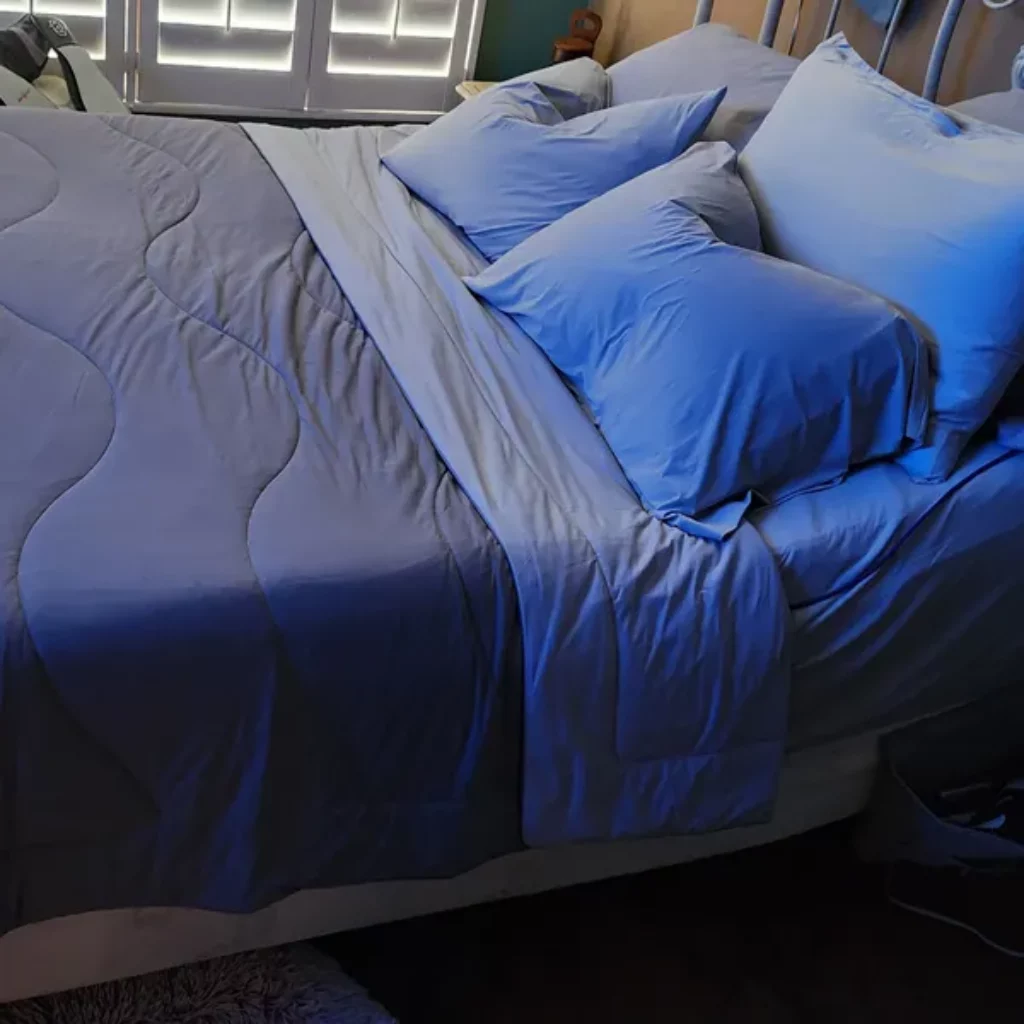
Best Value: Rest Essential Cool™ Comforter
Great cooling technology doesn’t have to break the bank. The Rest Essential Cool™ Comforter proves that effective temperature regulation can be affordable. This comforter features Rest’s innovative CoolFiber™ fill with excellent breathability and a soft, brushed fabric exterior that feels pleasant against the skin.
While it may not incorporate all the advanced technologies of Rest’s premium options, the lightweight construction and breathable materials effectively prevent overheating for most sleepers. Its corner tabs make it easy to use with a duvet cover, extending its lifespan and allowing for easy washing. The Essential Cool™ represents the perfect entry point into the world of cooling comforters.
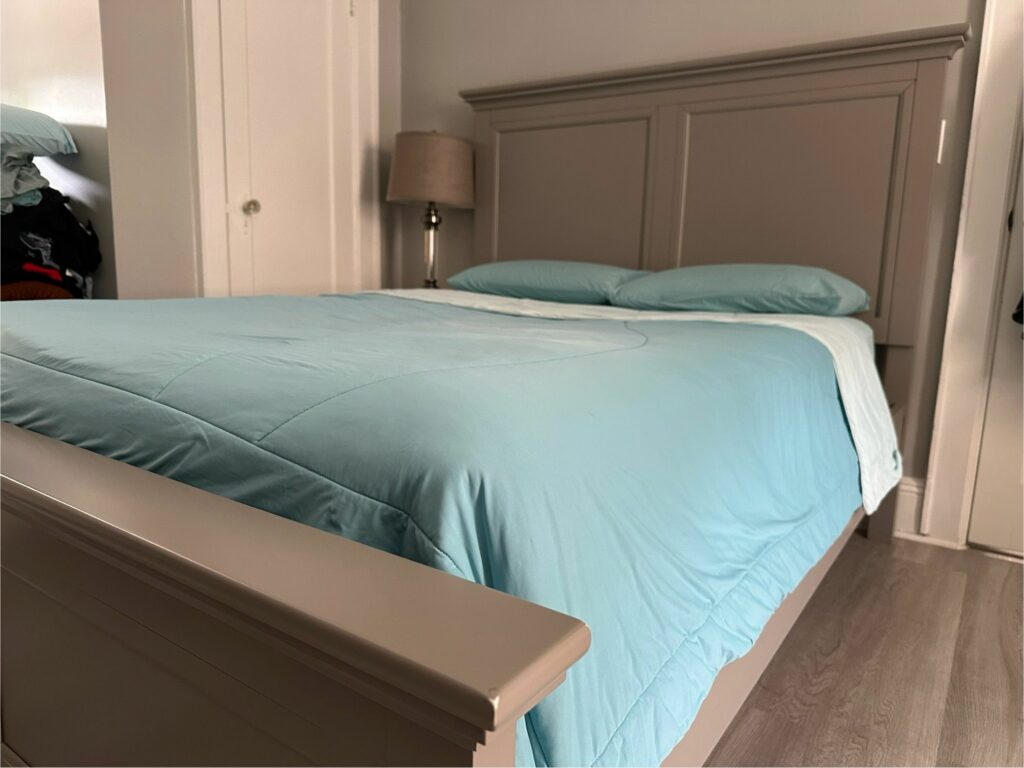
Best for Year-Round Use: Rest All-Season Cooling Comforter
Rest’s All-Season Cooling Comforter takes an innovative approach to temperature regulation with its dual-layer design. The comforter incorporates a thin layer of Rest’s proprietary TempBalance™ wool that naturally wicks moisture away from the body. This unique feature makes it exceptional at regulating temperature across seasons – keeping you cool in summer but providing adequate warmth in winter months.
The 100% organic cotton shell allows for excellent air circulation, and the comforter’s grid-pattern construction prevents the internal fill from bunching or shifting over time. The All-Season model is slightly weightier than Rest’s summer-specific options, making it perfect for those who want one comforter to use throughout the year.
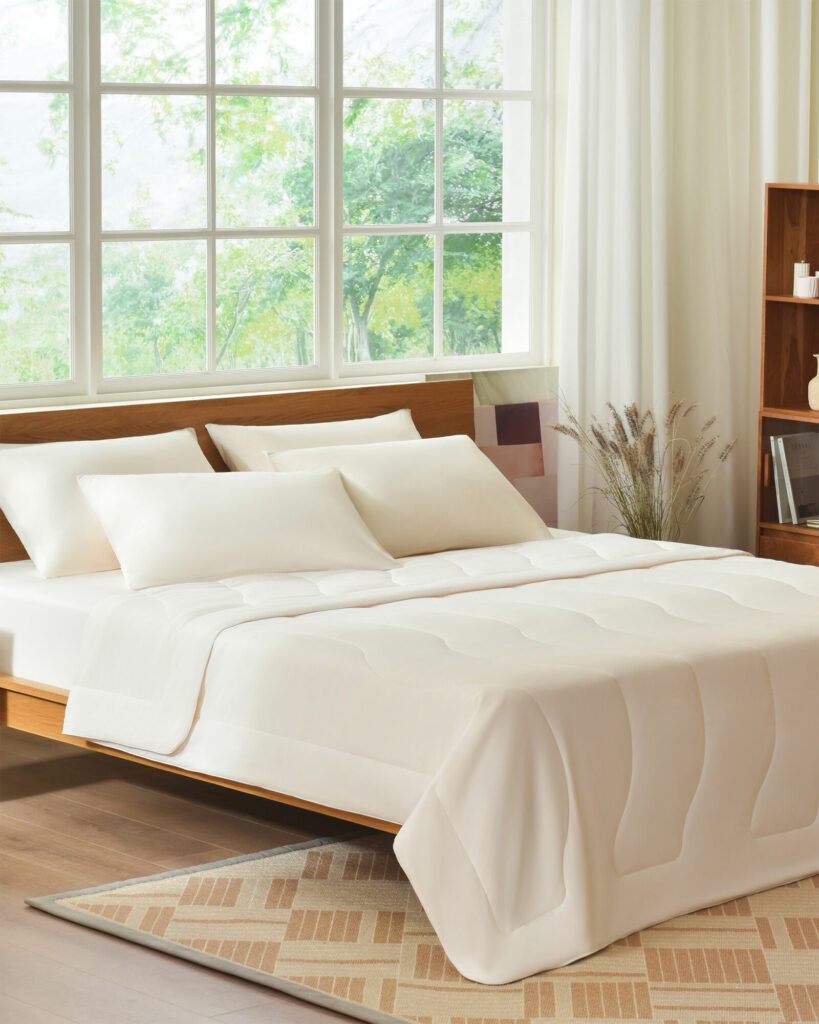
Best for Extreme Hot Sleepers: Rest Arctic Breeze™ System
For those with severe overheating issues, Rest has developed the Arctic Breeze™ System. This comprehensive sleep solution combines their cooling comforter technology with an innovative air circulation system built directly into the bedding.
The Arctic Breeze™ features micro-perforations throughout its surface that work in conjunction with Rest’s natural cooling fabrics to maximize heat dissipation. For those who experience significant night sweats or live in extremely hot climates, this specialized system provides unparalleled cooling performance. While it’s one of the pricier options in Rest’s lineup, many customers report it completely transformed their sleep experience.
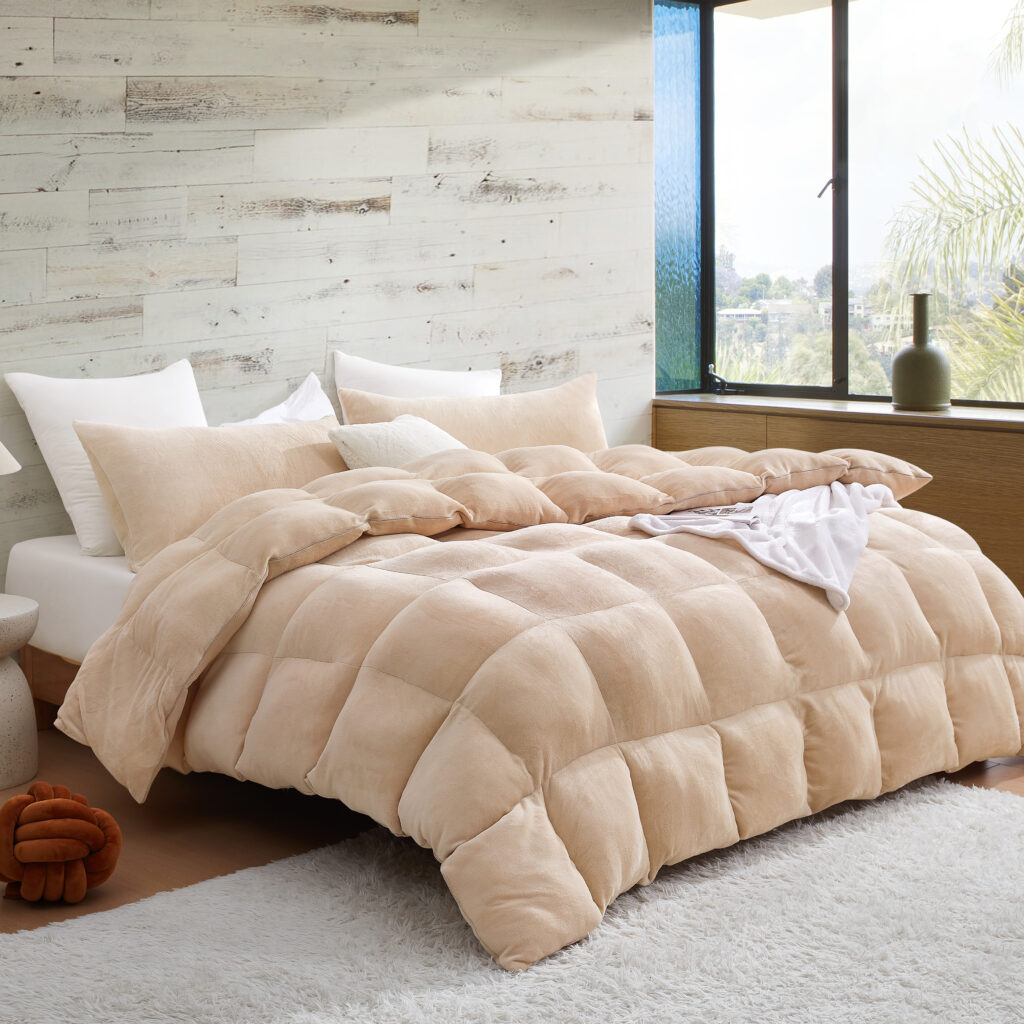
Complementary Products for the Ultimate Cool Sleep Experience
To maximize your cool sleeping environment, consider pairing your cooling comforter with:
- Cooling pillows – Often utilizing the same technologies as cooling comforters
- Breathable sheets – Bamboo, eucalyptus, or high-quality cotton with a percale weave
- Mattress cooling pads – For cooling from below
- Bedroom climate control – Smart thermostats, fans, or air conditioning units
Read the reviews – Public Thoughts
Common Questions About Cooling Comforters
Are cooling comforters actually cold to the touch?
Some cooling comforters do feel physically cool when you first touch them, particularly those with phase-change materials or cooling gel technologies. However, most cooling comforters work not by being “cold” but by effectively managing heat transfer and moisture to prevent overheating.
Do cooling comforters work for all seasons?
Many cooling comforters are designed to be all-season options, regulating temperature year-round. However, if you live in an extremely cold climate, you might want to layer your cooling comforter with an additional blanket during winter months or look specifically for dual-season options.
How long do cooling properties last?
The longevity of cooling properties depends on the specific technologies used. Basic breathable materials will maintain their properties for the life of the comforter. Specialized treatments may diminish somewhat over time but should last several years with proper care.
Can I use a duvet cover with a cooling comforter?
Yes, but choose wisely! Using a heavy, non-breathable duvet cover will negate many of the cooling benefits of your comforter. Opt for lightweight, natural fiber duvet covers like bamboo, eucalyptus, or thin cotton that won’t interfere with the comforter’s temperature-regulating properties.
Conclusion: Investing in Better Sleep
Sleep is not a luxury—it’s a necessity for good health, cognitive function, and overall well-being. If temperature issues are disrupting your sleep, a cooling comforter represents one of the most impactful improvements you can make to your sleep environment.
The best cooling comforter for you will depend on your specific needs, preferences, and budget. Consider the materials, technologies, and features we’ve discussed, and remember that what works wonderfully for one person might not be perfect for another. Many companies offer sleep trials or generous return policies, allowing you to test a comforter before fully committing.
By investing in a quality cooling comforter that addresses your specific sleep needs, you’re not just buying bedding—you’re investing in better sleep and, by extension, better health and quality of life. Cool, comfortable, uninterrupted sleep awaits!







